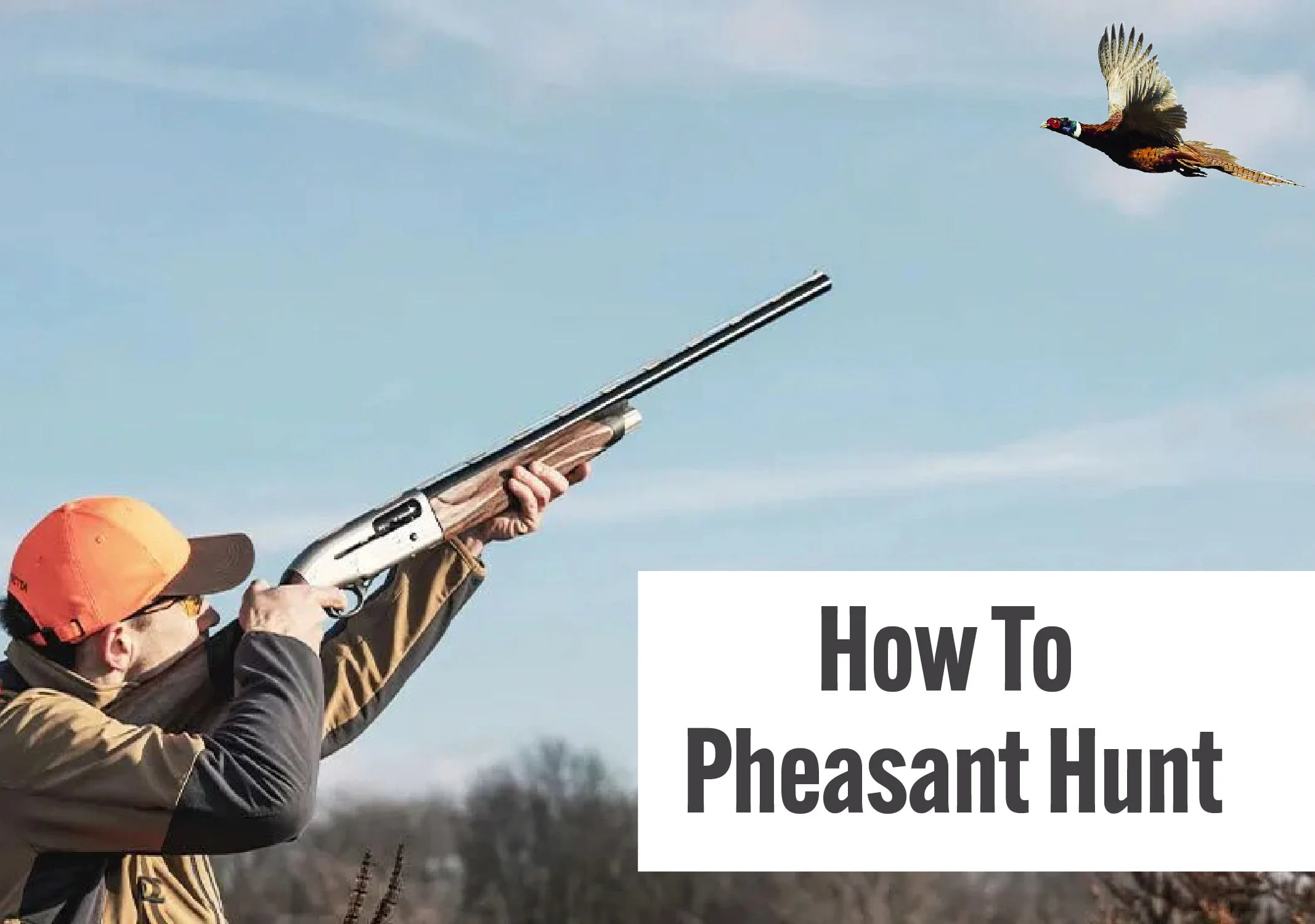
Table of Contents
Calling all upland game hunting enthusiasts! If you’re looking for an exhilarating outdoor pursuit, pheasant hunting is a rewarding and challenging experience. Pursuing these elusive and colorful birds through fields and cover can be both exciting and humbling. In this comprehensive guide, we’ll walk you through the essential steps to become a successful pheasant hunter, from selecting the right gear and scouting locations to adopting ethical hunting practices and ensuring safety in the field. So, load up your shotgun and let’s embark on a thrilling pheasant hunting adventure!
Pheasant hunting is a traditional outdoor sport where hunters track and shoot wild pheasants. These beautiful birds, known for their flashy coloration and swift flight, have been a popular target for hunters for centuries.
Pheasant hunting is an enjoyable pastime that brings you close to nature. It challenges your patience, resilience, and sharpens your hunting skills. Moreover, it’s a social event where friends and families often bond and create lifelong memories.
Before heading into the field, familiarize yourself with pheasant characteristics. Male pheasants, called roosters, have colorful plumage, while females, known as hens, are more camouflaged. Pheasants prefer areas with sufficient cover, such as tall grasses, brush, and crop fields.
Pheasants are vocal birds, and learning their calls can significantly improve your chances of locating them. The “crowing” sound of a rooster at dawn and dusk is an iconic indicator of their presence.
Choose a shotgun suitable for upland hunting, typically in 12 or 20-gauge, with a modified or improved cylinder choke for more extended shots. Use non-toxic shot, such as steel or tungsten, to comply with regulations and promote environmental stewardship.
Wear blaze orange clothing to ensure visibility to other hunters in the field. Don’t forget essential safety gear, including eye and ear protection.
Look for areas with dense cover, such as grasslands, agricultural fields, and shelterbelts, as these are prime pheasant habitats. Seek permission from landowners before entering private property.
During pre-hunting days, scout the fields for signs of pheasant activity, such as tracks, droppings, and feathers. Pay attention to areas with ample food sources, such as grain fields and weed patches.
Pheasants are most active during the early morning and late afternoon. Plan your hunt accordingly, taking advantage of these peak activity hours.
Weather can significantly impact pheasant behavior. Hunting after a light rain or during overcast days may increase your chances of flushing out pheasants.
Pheasant hunting is often done in a line formation with fellow hunters spread out evenly, walking through fields and cover to flush out birds. This technique ensures comprehensive coverage of the area and safety among hunters.
Well-trained flushing dogs, such as Labrador Retrievers and English Springer Spaniels, can be invaluable assets in locating and flushing pheasants from cover.
When a pheasant flushes, stay calm and track the bird with your shotgun. Lead the bird slightly with your shot, as pheasants can fly quickly. Always follow proper firearm safety rules and only shoot within your effective range.
Ensure the safety of yourself and others at all times. Always be aware of your surroundings and the location of other hunters in the field.
Practice ethical hunting by respecting wildlife and their habitats. Follow all hunting regulations and obtain necessary permits. Additionally, treat private property with respect and gratitude for the landowners’ permission to hunt.
Pheasant hunting is a thrilling and rewarding outdoor activity that allows you to connect with nature and appreciate the beauty of upland game birds. By understanding it’s behavior, selecting the right gear, scouting for prime hunting locations, and adopting ethical hunting practices, you can enhance your chances of a successful and memorable hunting experience. So, embrace the challenge and adventure as you pursue these beautiful birds through the fields, and remember to savor every moment spent in the great outdoors.
1. Do I need a hunting license to pheasant hunt?
Ans. Yes, a hunting license is required to legally hunt pheasants in most states. Additionally, some states may have specific pheasant stamps or permits that you need to obtain.
2. Can I hunt pheasants on public lands?
Ans. Yes, pheasant hunting is allowed on many public lands, such as wildlife management areas and state parks. However, it’s essential to check the specific regulations and seasons for each location.
3. What is the best shotgun choke for pheasant hunting?
Ans. For pheasant hunting, a modified or improved cylinder choke is generally recommended. These chokes provide a good balance of shot spread and range, making them suitable for upland game hunting.
4. Is it necessary to use a hunting dog for pheasant hunting?
Ans. While using a hunting dog can significantly enhance your pheasant hunting experience, it is not a strict requirement. However, a well-trained flushing dog can help locate and flush pheasants from dense cover, improving your chances of a successful hunt.
5. Can I hunt pheasants alone, or is it better to hunt in a group?
Ans. Pheasant hunting can be enjoyed both solo and in a group. Hunting in a group allows for a more organized approach and safer experience. However, solo hunting can provide a more intimate and self-reliant experience in the field.
Welcome to the latest 2025 hunting-season guide, tailored for readers of TheShootingGears. Whether you’re carving…
Technology is revolutionizing the way we hunt and shoot. From GPS mapping and ballistics calculators…
Hunting during cold weather isn’t just about layering up your boots matter. When you’re sitting…
When you’re building or upgrading your AR-style rifle, one of the key decisions you’ll face…
When it comes to tactical rifle scopes, not all optics are created equal. The differences…
In today’s age of high-tech hunting, drones have transformed the way hunters scout terrain, locate…
This website uses cookies.